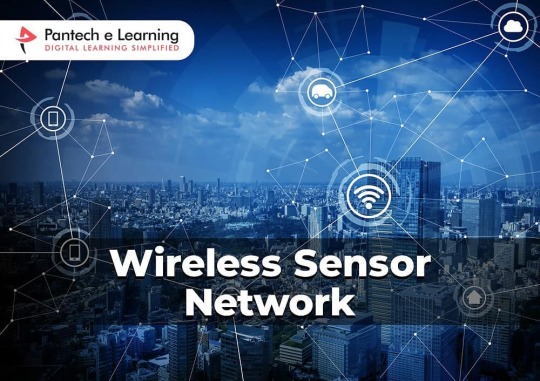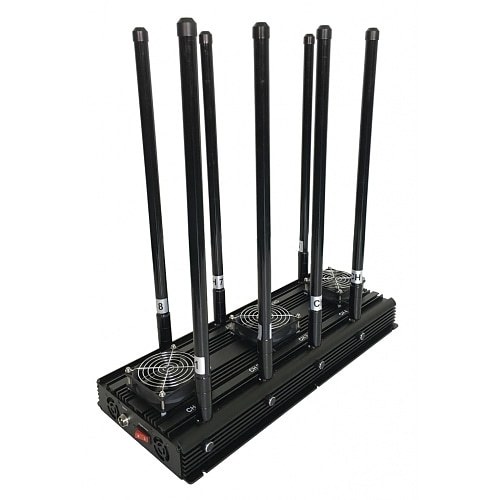#wirelesscommunication system
Explore tagged Tumblr posts
Text
Order now https://netboon.com/product/10db-coupler/
5G Directional 10dB Coupler | Combiner for Antenna, Coax Cables, RF Applications-698-4000MHz






#netboon#5GdirectionalCoupler#10dbcoupler#combiner#AntennaCoupler#coaxcables#RFapplications#6984000mhz#5gnetworks#cellularsystem#wirelesscommunication system#telecom product#Antennas#rfsystems#signal distribution#RFsignalManagement
0 notes
Text

🚀 Boost Your Connectivity with the RF Radio Module!Get seamless communication and reliable performance for your wireless projects. Whether you're working on IoT, RF communication systems, or custom electronics, this module has got you covered.🛒 Available now at Enrgtech – your trusted partner in quality electronics!#RFModule #WirelessCommunication #TechInnovation #Enrgtech #Electronics #IoT #WirelessSolutions #TechUpgrade
0 notes
Text
Millimeter Wave Radar Market is EXPLODING! From $1.9B to $7.6B by 2034! 📡🔥
Millimeter wave (mmWave) radar market is expanding rapidly, driven by the increasing adoption of advanced sensing technologies across various industries. This technology, which operates in the 30 GHz to 300 GHz frequency range, offers high precision, superior resolution, and enhanced object detection capabilities, making it essential for applications in automotive, aerospace, defense, telecommunications, and healthcare.
To Request Sample Report : https://www.globalinsightservices.com/request-sample/?id=GIS22015 &utm_source=SnehaPatil&utm_medium=Article
A significant driver of market growth is the rising demand for autonomous vehicles and advanced driver-assistance systems (ADAS). mmWave radar enhances vehicle safety by providing real-time object detection, collision avoidance, and adaptive cruise control. Additionally, the expansion of 5G networks is fueling demand for mmWave technology in high-speed data transmission and connectivity solutions.
The defense and security sectors are also leveraging millimeter wave radar for surveillance, target detection, and threat monitoring. Meanwhile, industries like healthcare are integrating this technology into non-contact vital sign monitoring systems, improving remote patient care.
North America leads the market due to strong investments in automotive automation, 5G infrastructure, and military applications. However, Asia-Pacific is emerging as a key growth region, with increasing adoption in smart transportation, consumer electronics, and telecommunications.
Despite its advantages, challenges such as high production costs, signal interference, and regulatory complexities remain. However, ongoing R&D and miniaturization efforts are expected to drive down costs and enhance adoption.
With advancements in autonomous systems, smart cities, and next-gen communication networks, the millimeter wave radar market is poised for substantial growth in the coming years.
#millimeterwaveradar #mmwaveradar #radartechnology #autonomousvehicles #adas #5gtechnology #smartcities #automotiveinnovation #radarsensors #futureoftransportation #collisionavoidance #radarengineering #wirelesscommunications #defensetechnology #militaryradar #aerospaceengineering #nextgenradar #mmwavesensors #iotconnectivity #radarsolutions #highfrequencytech #radardetection #remotehealthcare #securitysurveillance #droneintegration #wirelesstechnology #radarapplications #autonomousdriving #futuremobility #radarresearch #millimeterwave #smartmobility #radarinfrastructure #precisionradar #radarnetworks #aiinsensing #vehicleradar #mmwave5g #industrialautomation #surveillanceinnovation #radarsystems
0 notes
Text
Energy Harvesting Technology Market: Growth, Trends, and Future Outlook
The energy harvesting technology market is experiencing rapid growth as businesses and industries seek sustainable solutions to meet the increasing demand for power. Energy harvesting, also known as power scavenging, refers to the process of capturing and storing ambient energy from the environment, such as light, heat, motion, and vibrations, and converting it into usable electrical power. This technology is finding applications across various sectors, from consumer electronics to industrial machinery, automotive, and healthcare.
The global energy harvesting technology market size was valued at USD 0.6 billion in 2023 and is estimated to reach USD 0.9 billion by 2028, growing at a CAGR of 10.0% during the forecast period 2023-2028
The growth of the market is driven by rising environmental concerns, miniaturization and flexibility requirements, and integration of IoT devices in energy harvesting systems for building and home automation.
Download PDF Brochure @ https://www.marketsandmarkets.com/pdfdownloadNew.asp?id=734
Key Trends in the Energy Harvesting Technology Market
1. Growing Demand for Renewable Energy Sources
The global push for clean and sustainable energy has significantly boosted the adoption of energy harvesting technologies. As governments and corporations aim to reduce carbon footprints, energy harvesting offers an eco-friendly solution to power low-energy devices.
2. Integration with IoT Devices
The rise of the Internet of Things (IoT) is one of the most significant drivers of the energy harvesting technology market. With numerous IoT devices requiring continuous energy to operate, energy harvesting provides an efficient solution, especially for remote and wireless devices.
3. Advancements in Energy Storage Technologies
Innovations in energy storage, such as improved capacitors and batteries, are enhancing the efficiency of energy harvesting systems. These advancements enable devices to store energy more effectively, making them more practical for long-term use.
4. Miniaturization of Energy Harvesting Systems
As consumer electronics get smaller, energy harvesting systems are also becoming more compact. This miniaturization is helping to expand their use in applications like wearables, sensors, and wireless communication systems.
Types of Energy Harvesting Technologies
Energy harvesting technologies can be classified based on the type of energy they capture. Some of the most commonly used types include:
Solar Energy Harvesting: This involves capturing solar radiation and converting it into electrical power. Solar cells, whether photovoltaic or thin-film, are frequently used in solar-powered energy harvesting systems.
Thermal Energy Harvesting: Thermal harvesters utilize temperature differences to generate energy. This can involve using thermoelectric materials that convert heat into electrical energy.
Vibration Energy Harvesting: This technology captures mechanical energy from vibrations or motion and converts it into electrical power. It is often used in industrial applications where machinery generates constant vibrations.
Radio Frequency (RF) Energy Harvesting: RF harvesters capture energy from radio waves transmitted by wirelesscommunication devices like Wi-Fi routers and mobile networks.
Drivers of the Energy Harvesting Technology Market
Several factors are contributing to the growth of the energy harvesting technology market:
Sustainability and Environmental Concerns: With increasing concerns over environmental sustainability, businesses are investing in energy-efficient technologies like energy harvesting to reduce reliance on traditional power sources.
Cost Reduction in Energy Harvesting Devices: Over the years, the cost of manufacturing energy harvesting devices has decreased, making them more accessible and affordable for consumers and industries.
Government Regulations and Incentives: Governments worldwide are introducing policies that promote the use of renewable energy technologies. Energy harvesting fits into these initiatives by offering green and efficient solutions.
Challenges Facing the Energy Harvesting Technology Market
Despite its potential, the energy harvesting technology market faces several challenges:
Limited Power Output: Many energy harvesting technologies are limited by their power generation capabilities, making them suitable only for low-energy applications.
High Initial Investment: While the operational costs of energy harvesting devices are low, the initial investment can be significant, especially for large-scale implementations in industries like automotive and manufacturing.
Technical Barriers: The complexity of integrating energy harvesting systems with existing technologies, such as sensors and communication devices, presents a challenge in terms of design and implementation.
Market Outlook and Future Trends
The future of the energy harvesting technology market looks promising. Key developments include:
Widespread Adoption of IoT: As the IoT ecosystem grows, the demand for energy harvesting solutions will continue to rise. Energy harvesting will play a crucial role in powering IoT devices that are deployed in remote or difficult-to-reach locations.
Smart Cities and Infrastructure: Energy harvesting will be integral to powering smart infrastructure, such as sensors and surveillance systems used in smart cities. These systems require reliable, low-maintenance power sources, making energy harvesting a natural fit.
Innovation in Hybrid Energy Harvesting: Future energy harvesting systems may combine different energy sources (solar, thermal, and mechanical) to create more efficient and reliable power generation solutions.
The energy harvesting technology market is rapidly evolving, driven by the increasing demand for sustainable, efficient, and cost-effective energy solutions. As advancements continue in areas such as miniaturization, storage, and hybrid systems, energy harvesting is poised to become a critical technology in powering IoT devices, smart cities, and industrial systems. While challenges remain, the long-term outlook for energy harvesting technology remains positive, with continuous innovation paving the way for a greener, more energy-efficient future.
FAQs on Energy Harvesting Technology Market
1. What is energy harvesting technology?
Energy harvesting technology refers to the process of capturing and converting ambient energy (such as light, heat, motion, or vibrations) into electrical power. This energy can be used to power small electronic devices or stored for later use.
2. What are the main types of energy harvesting technologies?
The main types of energy harvesting technologies are solar, thermal, vibration, and radio frequency (RF) energy harvesting.
3. How does energy harvesting benefit the environment?
Energy harvesting helps reduce reliance on traditional power grids, which are often powered by non-renewable resources. By utilizing ambient energy, it promotes sustainability and reduces environmental impact.
4. What industries are adopting energy harvesting technologies?
Industries such as consumer electronics, automotive, healthcare, industrial manufacturing, and IoT are all adopting energy harvesting technologies to power low-energy devices and systems.
5. What are the challenges in the energy harvesting technology market? Challenges include limited power output, high initial investment costs, and technical barriers in integrating energy harvesting devices with existing systems.
0 notes
Text
"Powering Wireless Technology: Trends in the RFIC Market (2024-2033)"
Radio Frequency Integrated Circuit (RFIC) Market : Radio Frequency Integrated Circuits (RFICs) are at the forefront of wireless communication, enabling a range of applications from smartphones and IoT devices to satellite systems and 5G networks. These sophisticated chips handle the transmission and reception of radio signals, allowing devices to connect and communicate over various frequencies with minimal interference. As the demand for faster data rates and higher bandwidth continues to grow, RFICs are evolving to incorporate advanced modulation techniques and integrated functionalities, making them essential for the next generation of wireless technology. Their compact design and energy efficiency also contribute to the sleek form factors we see in modern gadgets.
To Request Sample Report : https://www.globalinsightservices.com/request-sample/?id=GIS23967 &utm_source=SnehaPatil&utm_medium=Article
Looking forward, RFIC technology is poised for significant advancements, particularly with the proliferation of 5G and the expanding Internet of Things (IoT). Innovations in semiconductor materials, such as GaN and SiGe, will enhance the performance and reliability of RFICs, enabling faster, more stable connections. Furthermore, the integration of AI in RF design is expected to optimize signal processing and improve overall efficiency. As smart cities and connected ecosystems continue to develop, RFICs will play a pivotal role in facilitating seamless communication and enhancing user experiences across a multitude of platforms and devices.
Relevant Link : https://linkewire.com/2024/10/24/screenless-display-market-the-future-of-visual-tech-2024-2033/
#RFIC #RadioFrequency #WirelessCommunication #5GTechnology #IoTDevices #SmartGadgets #SignalProcessing #CompactDesign #GaNTechnology #SiGeSemiconductors #NextGenTech #ConnectedEcosystems #SmartCities #DataTransmission #TechInnovation
0 notes
Text
Ferrite in Focus: Enhancing Electronic Performance
Ferrite, a ceramic-like material composed of iron oxides combined with other metallic elements, is essential in the modern electronics and telecommunications industries due to its magnetic properties and electrical insulation capabilities.
These ferrimagnetic materials exhibit high magnetic permeability and low electrical conductivity, making them ideal for use in inductors, transformers, antennas, and various electromagnetic interference (EMI) suppression devices. Ferrites are widely used in the cores of power transformers and inductors because they help to minimize energy losses and improve the efficiency of power conversion systems. Additionally, their high-frequency response characteristics make them suitable for radio frequency (RF) applications, where they aid in signal integrity and noise reduction. The advancement in ferrite technology is also pivotal in the development of wireless communication systems, where they enhance signal clarity and reduce interference. As the demand for miniaturization and high-performance electronic components grows, the role of ferrites becomes increasingly crucial. Their unique combination of magnetic and insulating properties supports the continuous evolution of efficient, compact, and reliable electronic devices.
#Ferrite #MagneticMaterials #Electronics #Telecommunications #PowerTransformers #Inductors #RFApplications #WirelessCommunication #EnergyEfficiency #ElectronicComponents #MagneticPermeability #EMISuppression #HighFrequency #SignalIntegrity #TechInnovation
0 notes
Text
Top 8 Water Management Trends & Innovations in 2024
Arya College of Engineering & IT, Jaipur is recognised as a major contributor to the water resources engineering & management and watershed development & management at the national level.
1. SmartWater Management: Utilizing IoT, AI, and smart meters to track and manage water resources in real-time, improving efficiency, and reducing waste.
2. WastewaterProcessing: Advanced water treatment methods, such as membrane filtration, UV disinfection, and ozone treatment, for better water quality and resource recovery.
3. AdvancedFiltration: Innovative filtration techniques, including nanofiltration and ultrafiltration, for improved water treatment and purification.
4. FloodPrevention: Using drones, weather radars, and other technologies to monitor water levels and prevent flooding, ensuring water safety and resource management.
5. Water-savingtechnology: Smart irrigation systems, low-flow fixtures, and other water-saving solutions to conserve water resources.
6. DecentralizedInfrastructure: Decentralized water infrastructure, such as rainwater harvesting systems and onsite wastewater treatment, to improve access to drinking water in remote areas.
7. InnovativeMaterials: Novel materials, like graphene-based membranes, for more efficient and sustainable water treatment and filtration.
8. Desalination:Advanced desalination technologies, such as reverse osmosis and electrodialysis, for converting seawater into freshwater.
9. Real-TimeWater Quality Monitoring: Continuous monitoring of water quality in remote locations, ensuring sustainable and safe water resources.
10. Technology-DrivenReduction in Water Distribution Leakage: Innovative technologies, such as advanced sensors and data analytics, to detect and fix water leakages, conserving water resources and reducing operational costs.
11. RemoteSensing of Water: Remote sensing technologies for water accounting, non-revenue water remediation, and water management.
12. SmartIrrigation: IoT-enabled smart irrigation systems for efficient water use in agriculture.
13. WaterQuality Control: IoT-enabled water quality control systems for real-time monitoring and management.
14. DistributedTechnology: Distributed technology for expanding water and wastewater services to remote areas.
15. Low-Costand Effective PFAS Remediation: Innovative solutions for removing per- and polyfluoroalkyl substances (PFAS) from water.
16. MagneticCell-Enrichment Technology: Attractive solutions for water treatment and resource recovery.
17. BiodegradableDisinfectants: Natural disinfecting micelles based on ionic liquids for water treatment, reducing bacterial resistance.
18. Chemical-FreeWastewater Removal Treatment: Cost-effective and chemical-free water treatment for removing dyes and producing nitrogen fertilizer.
19. ReplacingGlass pH Electrodes with Metal: More robust metal electrodes for pH sensing in water samples, improving durability and reducing fragility.
20. SparklingWater Treatment Using Nanobubbles: Cost-effective and chemical-free nanobubble generation for water treatment, with minimal impact on water quality and aquatic life.
How do smart water meters work
Smart water meters work by utilizing advancedtechnology to measure and monitor water consumption accurately and in real time. These meters consist of several core components that enable their functionality:
1. HighlyAccurate IoT Sensor: Smart water meters are equipped with a highly accurate sensor, typically based on ultrasonic or electromagnetic principles, that measures water flow precisely as it passes through the meter.
2. MicrocontrollerUnit (MCU): The meter includes a microcontroller unit that processes data collected by the sensor. The MCU can analyze water consumption patterns, detect leaks, and provide real-time data for better decision-making.
3. WirelessCommunication Modules: Smart water meters are equipped with wireless communication modules such as cellular, Wi-Fi, or LoRa. These modules enable seamless data transmission, allowing for remote monitoring of water consumption and prompt identification of anomalies.
0 notes
Text
The lierda 5G EVK uses Huawei's 5G MH5000 industrial module as the core and integrates an on-board high-speed communication interface, which can help partners quickly upgrade their devices. Through cooperation with Huawei, Lieda can provide 5G communication solutions for applications such as video surveillance, industrial routers, smart factories, industrial robots, and drones, accelerating the implementation of 5G applications. EVK supports 5G NSA/SA dual mode, which can help industry customers flexibly access different 5G mode networks, and also supports 2G/3G/4G to directly synchronize 5G network coverage. Technical parameters ● 5G NR mode: support SA/NSA ● Working band: 5G NR: N78, N79, N41 ●4G LTE:B1,B3,B5,B8,B34,B38,B39,B40,B41 ●3G UMTS/WCDMA:B1,B8 ●2G:1800MHz/900MHz ● Peak speed: 5G NR: 2Gbps/230Mbps (DL/UL) ●4G LTE:1Gbps/30Mbps(TDD DL/UL) 600Mbps/75Mbps(FDD DL/UL) ●3G : 42Mbps/5.76Mbps(DC-HSPA+ DL/UL ) 21Mbps/5.76Mbps(HSPA+ DL/UL ) ●2G:236.8Kbps/236.8Kbs(EDGE DL/UL) 85.6Kbps/85.6Kbps(GPRS DL/UL) ●Size: 100mm×100mm×35mm (excluding antenna) ●Input voltage: input voltage 12V ●Antenna interface: ANT1 TRX, 824MHz-5G, ANT2 TRX, 824MHz-5G, ANT3 RX, 1805MHz-5G, ANT4RX, 1805MHz-5G ●External interface: Type C×1 (support USB2.0/USB3.0), 12V DC interface ×1, SIM card interface ×1, PCIE interface ×1, SPI interface ×2, IIC interface ×1, ADC interface ×6 Software features: Data Service (IPV4, IPV6), SMS Service, Voice (VoLTE), eUICC, Secure Boot, AT command. System support: Linux, Windows, Andorid Hope to be your valued supplier from China. CONTACT: AMINA ZHU E MAIL: [email protected] WhatsApp: 008615061516896 https://en.lierda.com/ https://youtu.be/SAflWdlhOLk #IoTembedded #microcontrollers #sensors #wirelesscommunication #IoTgateways #IoTcloudplatforms #embeddedmicro-controltechnology #RFhardwareR&D #5Gcommunicationsolution #NB-loT #LoRa #Wi-Fi #Wi-SUN #BLE #IOTsystem #semiconductordistribution #cloudpipe-endsolutions #Cat.1 #Wi-SUN #ZigBee #AIrecognition #IoTbasicservice
0 notes
Text
Device-to-Device Microprocessor-based Wireless Communications Sunway University Join Sunway Photonics Laboratory as a PhD Research Assistant in microprocessor-based device-to-device #wireless #opticalcommunications See the full job description on jobRxiv: https://jobrxiv.org/job/sunway-university-27778-device-to-device-microprocessor-based-wireless-communications/?feed_id=41852 #ScienceJobs #hiring #research #PhDscholarship #researchassistant #researcher #wirelesscommunications #telecommunications #freespaceoptics #networking Greater Kuala Lumpur #Malaysia #PhDStudent #ResearchAssistant #Researcher
0 notes
Text
Order now https://netboon.com/product/5db-coupler/
Two Way N Female Type 5dB Coupler | 5G Splitter for Coaxial Cable and RF Equipments- 690-3800MHz







#netboon#Twowaycoupler#5dbcoupler#5G splitter#N female coupler#coaxialcablesplitter#RFequipment#6903800MHZ#5gnetworks#cellularsystem#wirelesscommunication system#telecom product#Antennas#rfsystem#signal distribution#RF signal management
0 notes
Photo

Top WIRELESS SENSOR NETWORK Projects Wireless Sensor Network (WSN) technologies provide a bridge between information systems and the physical world. Nowadays, Wireless Sensor Networks emerge as an active research area. The project works in WSN offer several opportunities for engineering students to improve practical knowledge. Where can you find the best WSN Projects? Pantech eLearning is an Online Learning Service provider in Chennai. We are providing some of the best Wireless Sensor Network Projects. Given below is the list of Top Projects we are providing: 1. Vehicle To Vehicle Communication 2. Intelligent Coal Mine Monitoring System 3. LoRa based Monitoring System for Agriculture 4. Wireless Sensors for Smart Environment 5. Visual Monitoring For Horticultural 6. Green House Monitoring and Controlling 7. A remote home security system 8. Image transmission using LiFi 9. Smart Traffic Systems 10. Personalised notification for disaster Visit our Website and Book your Projects Now. https://lnkd.in/eRZkbGm #wirelessnetworks #wirelesstechnology #wirelesscommunications #sensors #sensortechnology #wlan #network #projects #elearning #communications #chennai #coimbatore #hyderabad #vijayawada #india https://instagr.am/p/CMB8wK-pqNK/
0 notes
Photo

Wireless Communication Revolutionized with BLE! You have an idea about the BLE technology! Now, is the time to take with yourself the BLE technology, which frames to bestow your communications with high-level security, low power, low cost, and robust connectivity. BLE is boasted with the ability to help you out in a multifarious case of scenarios such as Home Automation Systems, Smart Cities, Smart Tags, Wireless Charging, Virtual Sports Trainers, and much more. With BLE there’s always more than what’s meet the eye. Get partnered with Teksun if you wish to lay your hands on the ancillary and induce in your business the novel of BLE solutions and services. #wirelesscommunication #technology #networking #ble #solutions #services #service #Teksun #TeksunInc
0 notes
Text
Filtered Connectors Market to Expand to $8.2 Billion by 2034 – The Future of Connectivity
Filtered Connectors Market is experiencing rapid growth, fueled by the increasing need for EMI and RFI suppression in high-performance electronic systems. These connectors integrate advanced filtering technologies to ensure signal integrity and reliability, making them indispensable in aerospace, defense, telecommunications, and industrial applications.
To Request Sample Report : https://www.globalinsightservices.com/request-sample/?id=GIS26880 &utm_source=SnehaPatil&utm_medium=Article
Among the leading market segments, military and aerospace dominate, driven by their demand for secure and interference-free communication systems. The automotive sector follows as the second-largest segment, reflecting the rising integration of electronic components in vehicles for enhanced connectivity and safety.
Key Market Insights
✅ North America leads the market, benefiting from technological advancements and defense investments ✅ Europe follows, with Germany emerging as a key player, supported by a strong automotive industry ✅ The U.S. remains the top-performing country, leveraging defense and aerospace innovation
Market Segmentation
🔹 By Type: EMI Filters, RFI Filters, Signal Line Filters, Power Line Filters 🔹 By Product: Circular Connectors, Rectangular Connectors, D-Sub Connectors, Filtered USB Connectors 🔹 By Application: Aerospace, Military, Automotive, Industrial, Medical, Telecommunications 🔹 By Technology: Capacitive Filtering, Inductive Filtering, Hybrid Filtering 🔹 By End User: Defense Contractors, Telecom Operators, Automotive Manufacturers, Medical Device Companies
In 2024, the market reached 120 million units, with projections to hit 200 million units by 2028. The military and aerospace sector holds the largest market share at 50%, followed by automotive (30%) and telecommunications (20%).
Leading players such as TE Connectivity, Amphenol, and ITT Cannon dominate the market, driving advancements in EMI shielding and high-performance connectivity solutions.
#filteredconnectors #emiprotection #rfisuppression #electroniccomponents #aerospaceengineering #militarydefense #automotiveelectronics #telecommunications #dataintegrity #electromagneticshielding #emi #rfishielding #signalintegrity #highreliabilityconnectors #aviationtechnology #industrialautomation #medicalelectronics #defenseelectronics #teconnectivity #amphenol #ittcannon #powerlinefilters #communicationsystems #secureconnections #innovationintechnology #militaryapplications #connectivitysolutions #automotiveinnovation #wirelesscommunications #radarshielding #smartvehicles #advancedmanufacturing #regulatorycompliance #criticalinfrastructure #shieldedcables #highperformanceelectronics #inductancefiltering #capacitivefiltering #hybridfiltering
0 notes
Text

Jammers4U 💪🙋♂️ Cell Mobile 3G 4G 5G LTE GPS VHF UHF WiFi 2.4Ghz 5Ghz RC 433 315 868Mhz RECID Bomb DDS RF Wireless ‼
E-mail: [email protected]
#jammers #jamming #jammer #signaling #gps #signaljammer #5g #stop5g #stop5gnow #technology #privacy #security #police #army #military #3G #4G #lte #gps #vhf #uhf #wifi #bomb #nobomb #stopbombing #cellmobile #technology #system #wirelesscommunication
0 notes
Text
Sound Solutions: The Acoustic Wave Filters Market
The acoustic wave filters market is witnessing significant growth as the demand for high-performance filters in wireless communication, IoT devices, and consumer electronics continues to rise. Acoustic wave filters, including surface acoustic wave (SAW) and bulk acoustic wave (BAW) filters, play a critical role in frequency control, signal processing, and interference mitigation in electronic devices. With the proliferation of wireless technologies and the advent of 5G networks, the need for advanced acoustic wave filters with superior performance, smaller form factors, and lower power consumption is driving innovation in the market.
Advancements in material science, MEMS fabrication techniques, and design methodologies are driving innovation in the acoustic wave filters market, enabling manufacturers to develop filters with improved bandwidth, selectivity, and insertion loss characteristics. These advancements have led to the development of miniaturized SAW and BAW filters that meet the stringent requirements of next-generation wireless devices, such as smartphones, tablets, wearables, and IoT sensors. Moreover, the integration of advanced packaging technologies, such as wafer-level packaging and system-in-package (SiP) solutions, is enabling seamless integration of acoustic wave filters into electronic devices, reducing footprint and improving overall system performance.
#AcousticWaveFilters #SAWFilters #BAWFilters #WirelessCommunication #IoTDevices #ConsumerElectronics #5GTechnology #MEMS #ElectronicDevices #FrequencyControl #FilterTechnology #WirelessTechnology #IoT #TechInnovation #Miniaturization
0 notes
Photo

The Future of Transportation: Urban Air Mobility Systems The future of mobility arrived ! This is what EHang has been exploring so far: broad vision for on-demand urban air mobility systems. Come on and check out more here. #EHangUAMWhitePaper #TheFutureOfTransporation #UAM #EHang #sustainability;#automation;#smartcities;#innovation;#disruptivetechnologies;#wirelesscommunications;#future #drone #mobility
0 notes